SEO has changed over the years with Panda, Penguin, and all the other Google updates. What used to work doesn’t anymore.
We have an interesting opportunity to look back at the core SEO principles that were relevant in 2014 and then compare them to updated progress in SEO.
All the information we present indicates what you should be avoiding and what you should be doing now. It’s interesting to see the evergreen concepts that continue to influence today’s SEO when looking at the Quick Sprout 2014 infographic.
It’s a case of the old and the new in SEO and explains how you need to adjust your SEO strategy today. Nonetheless, the underpinning success of optimizing websites has many of the same foundations nearly ten years later.
Before we continue, you must factor SEO tools into any strategy. If you’re new to SEO, we compiled the best products and courses — perfect for getting your foot on the SEO ladder.
Now let’s compare Quick Sprout’s 2014 infographic against a more recent publication from Wordstream.
According to Wordstream, these are the current factors that influence and drive SEO:
- The new “E” in E.E.A.T
- Audience-targeted, not traffic-targeted content
- Increased emphasis on author authority
- Satisfying, helpful content
- AI-generated content and content-writing software
- SEO automation
- Changes to CTRs by SERP positions
- Product page SEO
- SEO competitor analysis
- Less crawl frequency
- Image SEO revitalized
- Fast-loading, high-performing websites
It’s a great article – we recommend giving it some time to read thoroughly.
Here are a few specific points that stood out for us — E.E.A.T. (And what’s the added E all about?):
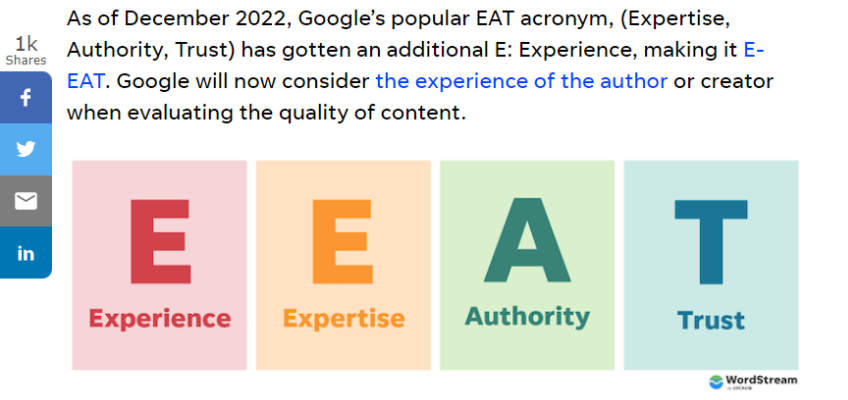
That’s right — we’re now in the Google and SEO era where experience matters equal to expertise, authority, and trust. This provides a better UX (user experience) for the general public.
And while it presents a headache for content marketers and SEO practitioners, ultimately, it leads to better content. Google raises the bar, and we’re going to keep clearing it.
Next, our focus has to include AI-generated content:
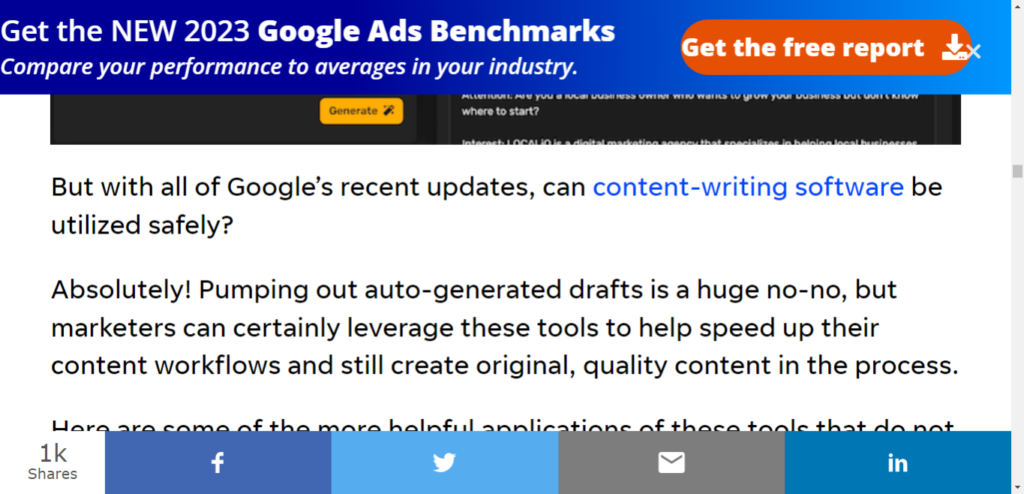
AI-generated blogs, sales funnels, emails, social media posts, art — it’s everywhere now. And while the discussion of whether Google will clamp down on this content is hazy and non-commital, this will likely change.
Here’s a good tip for content writers and marketers — always check your AI-generated content with AI-detection software.
We don’t think Google will flag AI content as spam outright; they generally want high-quality content that adds value. However, if you’re pumping out batches of unchecked content, you might be wandering into spam penalties with future Google updates.
Finally, we’re going with changes to CTR and how it affects SERPS placements on Google:
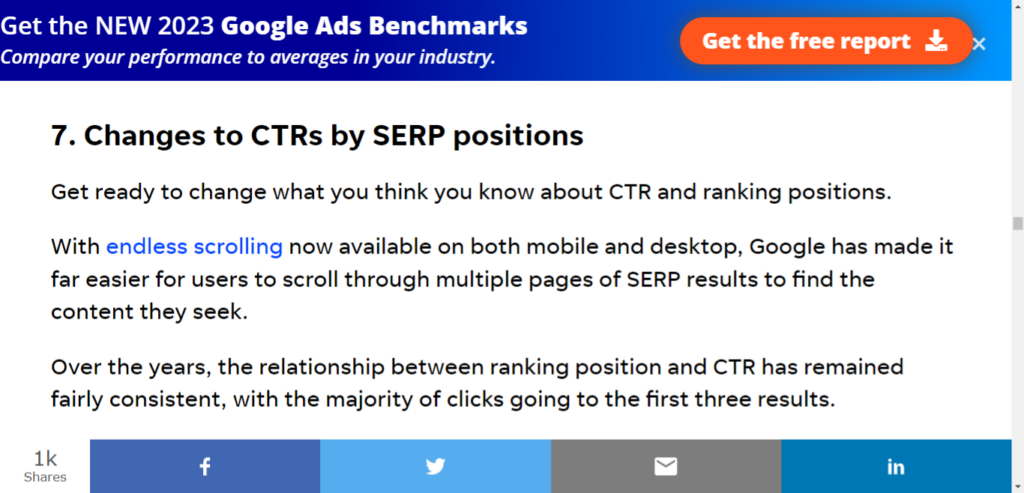
SERPS is essentially the driving force behind content marketing and modern SEO. Google wants to provide a seamless link between search intention and the correct, best content available.
Content writers, in particular, will understand the shift in how Google presents relevant articles. If we’re searching for a specific point for SEO, such as — What’s the average age of gamers — it will display this result:
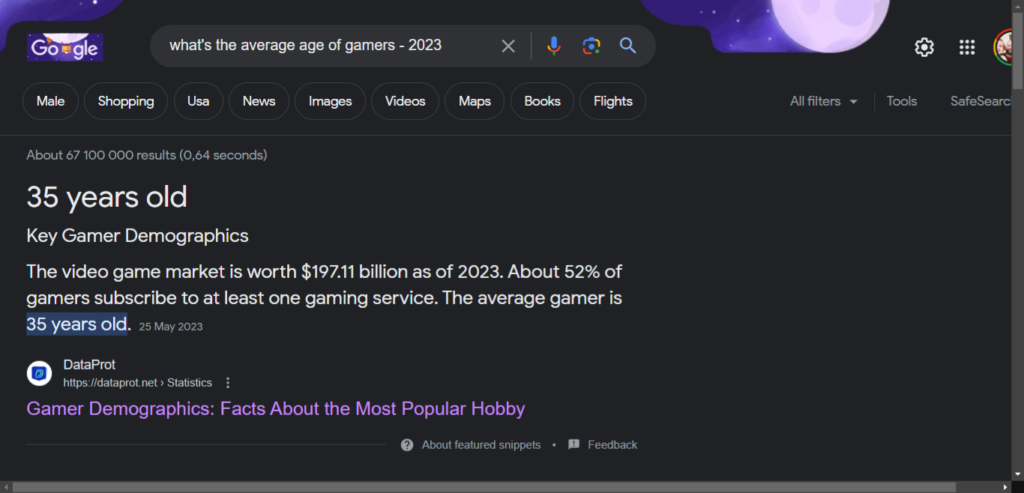
It provides me with a snippet from an article that contains this information, and because we input the year within my search, it displays the most recent information. And when we click on the blog, we see this:
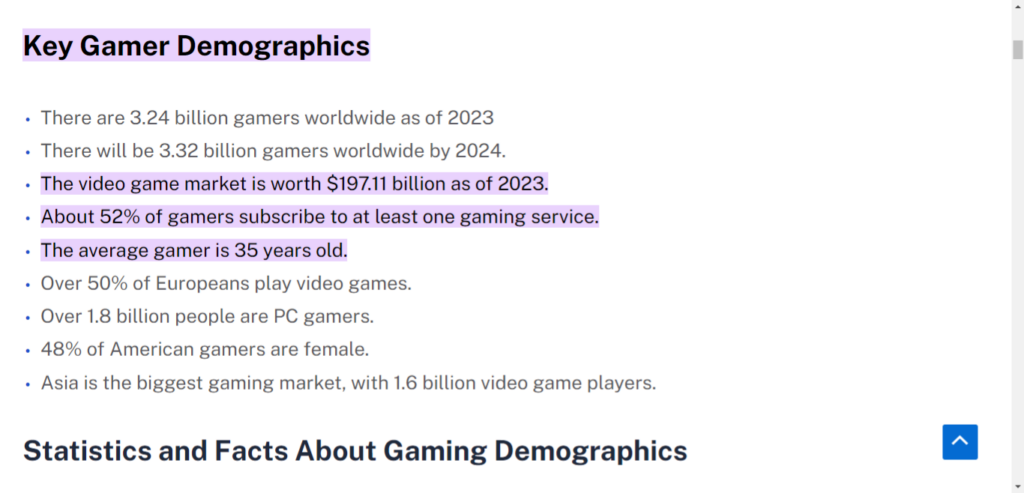
We weren’t transported to the top of the article to endlessly scroll through it to find this information. Google presented it to me on a plate. It also provides unique search intention link information in case we want to return to that point later.
Conclusion
The biggest thing that has changed over the years is content marketing. If you look at the graph above, you’ll notice that 88% of the companies that use SEO integrate content marketing into their strategy.
That was relevant in 2014 when this blog was first published, and it remains much the same today.
The key point of the infographic from 2014 is to focus on content marketing. And not because we said so… but because it works. And this sentiment continues to be relevant now.
To understand how you can incorporate this ethos into making money online, there’s no better option than blogging.
